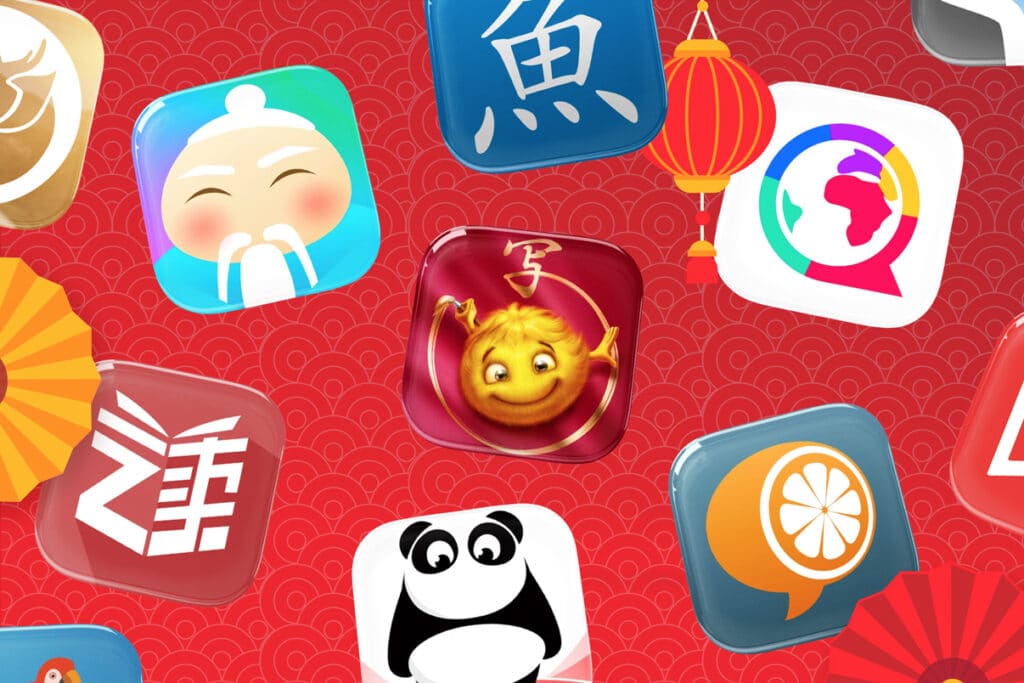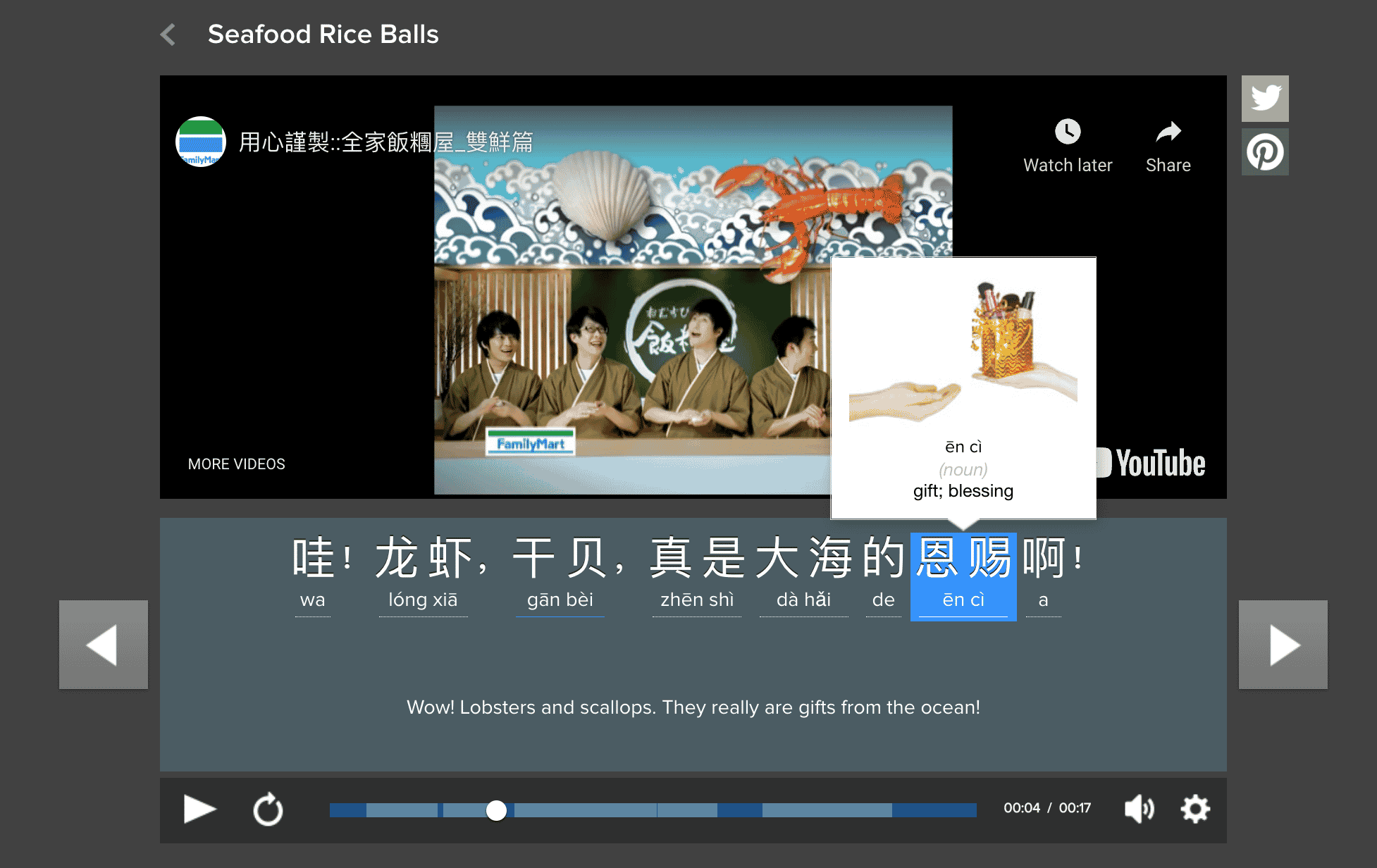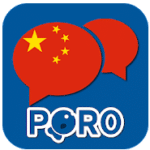
24 Best Apps for Learning Chinese to Improve Your Skills in 2024
Chinese learning apps are an awesome addition to your study toolbox.
They can connect you with native speakers, teach you how to write Chinese characters, help you remember vocabulary and more.
We’ve been reviewing Chinese learning resources and writing hundreds of blog posts about getting fluent in Chinese since 2011, so we know the standouts.
Here are our picks for the 24 best apps for learning Chinese in 2024!
Contents
- Overall Best Apps for Learning Chinese
- Apps for Chinese Vocabulary
- Apps for Learning Chinese Characters
- Apps for Reading in Chinese
- Apps for Chinese Pronunciation
- Apps for Listening to Chinese
- Chinese Reference Apps
- Apps for Studying Chinese with Games
- Other Useful Apps for Studying Chinese
- How to Choose and Use Chinese Learning Apps
Download: This blog post is available as a convenient and portable PDF that you can take anywhere. Click here to get a copy. (Download)
Overall Best Apps for Learning Chinese
1. Best for Gamified Learning: HelloChinese
Available on: Website | iOS | Android
Price: Free basic plan, option to pay to unlock additional features
HelloChinese helps beginners learn Chinese with a curriculum of well-rounded games and lessons. It boasts over eight million downloads worldwide.
Lessons with HelloChinese have a structured curriculum to follow. They revolve around real-world conversations and other listening activities with transcriptions and English translations.
The app touts the ability to support learners through the first six levels of the HSK.
Further, learners can use the included speech recognition to help with tricky Chinese pronunciation and tones, and there’s an interface for in-app handwriting to practice writing Chinese characters.
For a full review of HelloChinese, click here.
2. Best for Immersive Video-Based Learning: FluentU
Available on: Website | iOS | Android
Price: Subscription-based, free trial available
FluentU is an app that teaches you Chinese through authentic media clips like vlogs, movie trailers and interviews. With study tools like transcripts and interactive subtitles, the app is accessible to all levels of learners.
You can watch each video clip with subtitles in Chinese, pinyin or English—or all three! As you watch, just hover over any word to see its translation, grammatical information and a corresponding image.

Click on the word for example sentences demonstrating its proper usage and other videos where it’s used so you can understand it through various contexts.
Since it’s easy to forget new words, the app reinforces your learning with flashcards and personalized quizzes based on the videos you’ve watched.
3. Best Dictionary App: Pleco
Available on: Website | iOS | Android
Price: Free, option to pay for more features
Pleco is perhaps the most powerful Chinese dictionary app, and it’s indispensable for Chinese learners.
The dictionary can be used offline, and it allows you to look up characters using a variety of methods: you can type in the word, draw it with your finger or even take a picture with your device’s camera!
You can also search for words using characters, pinyin or a combination of both.
Pleco has a few more tricks for learners, too. It has a built-in flashcard system that also allows you to upload your own flashcards, and it lets you instantly look up any word in documents and text files.
Apps for Chinese Vocabulary
4. Best for Intensive Studying: Daily Chinese

Price: Subscription-based, some features available for free
Daily Chinese helps you grow your vocabulary with spaced repetition and diverse word packs, all the way to advanced Chinese.
In fact, it has one of the largest, if not the largest, collections of characters for learning Mandarin.
For HSK 6 and beyond, advanced learners will need an app like Daily Chinese, which contains over 9,000 characters for you to learn with the help of spaced repetition.
It also has the widest variety of word packs you’ll probably ever see in an app, from foundational topics like grammar to niche categories such as Buddhism and industry-specific vocabulary.
5. Best for Gamified Vocabulary Learning: Drops
Available on: Website | iOS | Android
Price: Subscription-based, free trial available
With Drops, you can learn valuable Chinese vocabulary in just five minutes in the free version or up to 10 or 15 minutes with a premium subscription.
The app is heavily illustrated so you can connect words directly to their meanings without having to translate them to your native language.
Drops uses addictive games to make learning Chinese even more fun, with collections of topics that you can choose from. For example, a word might pop up in the center of your screen, and then you have to drag it to its corresponding image.
For a full review of Drops, click here.
Apps for Learning Chinese Characters
6. Best for Memorizing Characters: Zizzle
Available on: Website | iOS | Android
Price: Subscription-based, option to pay to unlock full features and additional packs
Zizzle is an app that teaches Chinese characters through short stories and visuals.
Currently, there are over 1,000 characters available in the app, of which about 600 have charming and memorable illustrations to help you remember them. These correspond to the most common characters in each of the HSK levels.
Each Chinese character is taught through a helpful story, often including the pronunciation, corresponding audio, stroke order and meaning of the character.
7. Best for Writing Characters: Skritter
Available on: Website | iOS | Android
Price: Subscription-based, free trial available
Skritter is an app for those of you looking to get serious about your Chinese writing. It uses a handwriting recognition system to allow learners to actually practice writing characters.
With Skritter, you’re not only learning how to properly write each Chinese character with the correct stroke order, though.
You’re also learning how to correctly pronounce each word through audio pronunciations and tone gestures—swipe and tap to choose the right tone, and simultaneously learn how to write, read and pronounce each character.
Apps for Reading in Chinese
8. Best for Reading Stories: Du Chinese
Available on: Website | iOS | Android
Price: Subscription-based, some features available for free
Du Chinese is an app that teaches you Mandarin through stories. “Du” refers to the character 读 (dú) which means “to read.”
All off the stories have been written and recorded by native speakers, with professional translations. They’re available in Simplified and Traditional Mandarin and organized by HSK level.
Beginners start with really simple texts with basic vocabulary, while stories for intermediate learners are longer, with more focus on grammar. For advanced learners, the app features classical Chinese texts, such as poems from the Tang Dynasty.
9. Best for Reading News: The Chairman’s Bao
Available on: Website | iOS | Android
Price: Subscription-based, free trial available
The Chairman’s Bao is a popular app that curates news snippets and makes them learner-friendly, helping Mandarin learners get immersion with real-world news articles.
The app primarily features 7,000+ graded-reader lessons written as news articles. For example, you can read an article about AI in China monitoring students’ behavior.
The Chairman’s Bao has lessons available for all HSK levels, from beginner to advanced. It publishes about 1,600 new articles per year, so you’ll never run out of content!
During a lesson, you can click on any word for a translation into English, with authentic Chinese audio often available.
10. Best for Studying with Flashcards: LingQ
Available on: Website | iOS | Android
Price: Free basic plan, option to pay to unlock full features
LingQ’s language learning approach revolves around diving into native content like books and news articles and turning unknown words into flashcards.
These words can then be periodically reviewed until you remember what they mean.
A major strength of LingQ is its large library of Chinese written content with audio recorded by real Chinese speakers. New lessons are also added by users daily, so the collection is always growing organically.
You can even import your own content to the program, such as blog posts and webpages.
For a full review of LingQ, click here.
Apps for Chinese Pronunciation
11. Best for Pinyin and Tones: Standard Mandarin
Price: Free, option to remove ads for a fee
Standard Mandarin specializes in helping you get your pronunciation right. It even tells you how to use your tongue and facial muscles to make the correct sounds—so you can really work at getting rid of your foreign accent.
In fact, you even get facial anatomy charts and illustrations to take the guesswork out of making the right sound!
All you have to do is pick the sound you want to hear (written in pinyin), and you’re presented with information and images for all the different tones for that sound, complete with pronunciation drills and animations.
12. Best for Pronunciation: Speechling
Available on: Website | iOS | Android
Price: Free, option to pay for unlimited tutoring
Speechling is a nonprofit app that focuses on speaking, with emphasis on common, practical phrases.
First, you’ll listen to native audio and then you’ll record your own. Within 24 hours, a coach will analyze your recording for pronunciation, rhythm and intonation, as well as other aspects like word choice and grammar.
Aside from this, Speechling contains a variety of language activities to improve your Chinese conversation skills: Dictation Practice, Listening Practice, Flashcards, Fill in the Blank and an Audio Dictionary.
All of these are packed with thousands of common sentences voiced by professional native-speaking actors.
Apps for Listening to Chinese
13. Best for Podcasts: ChinesePod
Available on: Website | iOS | Android
Price: Subscription-based
ChinesePod is a program that uses over 4,000 video and podcast lessons to teach Mandarin Chinese.
There’s no rigid order that lessons need to be done in, either, so you can start anywhere!
Each lesson revolves around a dialogue or some other spoken Chinese component. Next is an analysis, allowing learners to really understand the structures at play within the Chinese sentences and conversations.
In addition to the base video or audio, learners also have access to downloadable vocabulary lists, grammar notes and English translations.
For a full review of ChinesePod, click here.
14. Best for Video Lessons: ChineseClass101
Available on: Website | iOS | Android
Price: Subscription-based, some features available for free
ChineseClass101 is part of the famous Pod101 learning series, which covers several languages. It offers organized lessons based on podcasts with authentic conversations.
Each lesson has a video or audio clip (often recorded as a podcast). These clips typically include a short scene or conversation in Chinese, on topics relating to school, work, family and everyday life.
After the video or audio clips, grammar and vocabulary notes are given, and you can also do short exercises. Additionally, there’s plenty of free content available with an account and on ChineseClass101’s YouTube channel.
For a full review of ChineseClass101, click here.
15. Best for Listening Practice: Chinese—Listening • Speaking
Available on: Android
Price: Free, option to upgrade to the pro version
This app specializes in audio-based lessons about conversational Chinese. Using day-to-day dialogues, it teaches you vocabulary and grammar structures in context.
There are four levels (Basic, Elementary, Intermediate and Advanced), covering everything from basic greetings to socializing to business interactions.
All audios come with transcripts, and there’s a slow reading function for easier listening as well. The app also has sections on common Chinese sentences, songs, news and short stories, plus HSK prep.
It might be too advanced for complete beginners, but I’d recommend it for semi-beginners and self-motivated learners.
Chinese Reference Apps
16. Best for Grammar: Chinese Grammar
Available on: Android
Price: Free
Chinese Grammar consists of easy-to-read grammar lessons with exercises and example sentences.
There are more than 100 grammar lessons on the app that guide you from beginner to advanced Chinese.
It’s essentially a portable grammar guide, and every grammar point is explained in the simplest terms, ensuring that you can readily apply each structure to your daily speaking and writing practice.
Although Chinese Grammar is free (with no ads or account creation), it’s only available on Android devices, with lessons available only in Simplified Mandarin and only up to HSK 5.
17. Best for HSK Practice: HSK Online
Available on: Website | iOS | Android
Price: Free, option to upgrade for unlimited VIP access
HSK Online is the premier app for Chinese proficiency test practice. It prepares you for the exam with HSK practice exercises, mock tests and customized study sessions.
Although there are other apps that offer HSK word lists, HSK Online is by far the most thorough in terms of exam prep for all levels, using previous exams and mock tests.
Other than vocabulary, this app supplies over 300,000 exercises and practice questions that build on your Mandarin listening, reading and writing skills.
For feedback, you’ll be given detailed explanations of errors. In fact, HSK Online is built on AI tech and other algorithms that review your progress and mistakes, customizing your study sessions to help you improve in your areas of weakness.
Apps for Studying Chinese with Games
18. Best for Beginners: ChineseSkill
Available on: Website | iOS | Android
Price: Free, option to pay for more features
The ChineseSkill app makes learning fun through games and interactive exercises. It’s mainly for intermediate learners at the HSK 3 and 4 levels, but you can also use it as a complete beginner.
ChineseSkill features a well-rounded curriculum with over 400 grammar points, 300 sentence patterns, 1,000 important words and over 1,500 essential characters.
Don’t be alarmed at those high numbers! The app will ease you into all this information through games, native-speaker videos and audio recordings.
There’s also the option to slow down playback, plus character writing practice, speaking exercises powered by speech recognition software and more.
19. Best for Writing: Lingodeer
Available on: Website | iOS | Android
Price: Free basic plan, option to pay for additional features
Lingodeer is a gamified Chinese app that teaches HSK 1 to 3 vocabulary and grammar, along with how to write 1,000 Chinese characters.
Its organized structure breaks down lessons into practical themes, though you do have to take them in order. Each lesson has a variety of exercises, however, so it’s hard to get bored.
For speaking practice, the app asks you to listen to Chinese sentences and then record yourself saying them. Lessons are reviewed with small dialogues that you can listen to, along with short audio- and video-based quizzes.
For a full review of Lingodeer, click here.
20. Best for Studying HSK 1 to 6: Ninchanese
Available on: Website | iOS | Android
Price: Subscription-based, some features available for free
Ninchanese is a full Chinese learning course with more than 1,500 Mandarin lessons available, all the way up to HSK 6.
Most lessons are gamified or have game-like components, making Ninchanese a stress-free and fun way to learn the language.
Lessons are all-around, focusing on reading, writing, speaking and listening to Chinese. Exercises include sentence building, recording speech, practice through dialogue and vocabulary matching.
In addition to its lessons, the app includes Spaced Repetition System (SRS) flashcards that make it easy to review vocabulary.
21. Best AI-Based App: Super Chinese
Available on: Website | iOS | Android
Price: Free basic plan, option to pay to unlock additional features
SuperChinese includes Chinese lessons based on real-life topics, with personalized quizzes and AI-based feedback.
This highly rated app has bite-sized lessons for HSK 1 to 5 learners. It tackles vocabulary, grammar and pronunciation in each lesson, with fun graphics and creative exercises.
There are over 400 lessons arranged according to common themes, such as work or ordering at restaurants.
What makes the app stand out is how it uses artificial intelligence to give you feedback. You’ll regularly be asked to say a word out loud or come up with your own sentence, and the app’s AI will point out any mispronunciations.
Other Useful Apps for Studying Chinese
The apps listed above have mostly specialized content, but there are also general language learning apps that I’d recommend to every Chinese learner:
22. Best for Remembering Vocabulary: Anki
Available on: Website | iOS | Android
Price: Free for Android, one-time fee for iOS
If you’re looking for a way to build your vocabulary effectively, then Anki is the app for you.
Anki is a powerful and effective flashcard program that uses a Spaced Repetition System. It detects how well you know a word, then shows it to you again at optimal times to help you learn it permanently.
This app allows for a high degree of customization, and it also has a huge user base of passionate learners, many of whom have made entire amazing decks available for anyone to use.
For a full review of Anki, click here.
23. Best for Conversation Partners: Tandem
Available on: Website | iOS | Android
Price: Free, option to pay for more features
Tandem pairs you with native Chinese speakers for actual communication practice. Essentially, it’s a social networking app for language learners.
On this language exchange platform, you’ll connect with learners whose target language is your mother tongue, allowing you to learn from one another.
The built-in language tools help make sure your interactions are as smooth as possible. Native speakers can provide corrections to your texts, and you can also use the translator to convert texts to your language if necessary.
Tandem gives you the option to communicate via voice notes, audio and video calls, too, so you can also practice pronunciation, speaking and listening.
For a full review of Tandem, click here.
24. Best for One-on-One Tutoring: italki
Available on: Website | iOS | Android
Price: Depends on the tutor, but usually ranges from $4 to $30 per hour
This app is a massive platform with thousands of tutors across practically every popular language. For Chinese alone, there are more than 1,000 tutors, mostly from China and Taiwan.
With italki, you can book sessions with any tutor of your choice. Sessions are usually done through video call, either on the italki classroom, Skype, WeChat or another video call platform.
What’s great about this learning app is the flexibility. Tutors are available at practically every time slot, 24/7.
Since it’s one-on-one, you can have customized lessons from free-flowing conversation to more structured learning based on HSK prep books or more.
For a full review of italki, click here.
How to Choose and Use Chinese Learning Apps
No matter how expensive or technologically advanced a Mandarin learning app may be, it’s only good if it works for you.
Here are some tips for choosing which of the many apps out there are actually worth your time:
- Decide what you want to learn. Do you want a course-like experience that takes you from zero to comfortable with the language as a whole? Do you want to learn how to write? Do you want to improve your listening skills? Figure out your specific goals and narrow your focus to apps that provide those types of learning materials.
- Figure out how you want to use the app. A flashcard vocabulary app makes more sense if you’re going to use it daily (or close to). If you just want to look up words you don’t know or words you’ve forgotten, however, a Chinese dictionary app will be better suited to you.
- Take your learning preferences into account. Do you actually hate studying with flashcards? Do you appreciate more in-depth grammar explanations? You can—and should—choose apps that align with your learning style to make the process more enjoyable.
So, once you figure out which apps you want to use, how do you make them worth the time?
Here are some suggestions for using your new Chinese learning apps effectively:
- Use them on the go. The major benefit of apps is that you can use them wherever, whenever! A character recognition app or a Chinese dictionary app means you can look up words as you encounter them. Apps with full courses are often designed to be done in short bursts—like while you’re waiting in line for coffee or commuting on public transit to work.
- Use them with other learning materials. Don’t shy away from textbooks or authentic Mandarin materials just because you have some shiny new apps! In fact, all the different forms of Chinese learning materials reinforce what you learn in each one.
- Be consistent. I find it helps to set a minimum time commitment. For example, spend 10 minutes studying flashcards every day. Then, you can add another 10 minutes to watch Chinese TV, listen to Chinese music or immerse yourself with WeChat. A lot of apps even track your progress and give you daily reviews and tasks, which helps with motivation.
- Change them up! You don’t have to stick with something if it’s boring or frustrating you. You might even enjoy an app for a while but slowly get tired of it. Simply find a new one to try so you can shake things up and reignite your desire to learn Chinese.
And with that, it’s time to pick your favorite Chinese learning apps and get started!
Soon, your downtime will be full of learning opportunities!
Download: This blog post is available as a convenient and portable PDF that you can take anywhere. Click here to get a copy. (Download)

























